As a small business owner, your time, money, and resources are all precious. When you’re running a small business, every decision matters, especially when it comes to how you manage your data. Whether you’re tracking sales, managing inventory, analyzing customer behavior, or experimenting with social media marketing, data can give you the insights you need to make smarter, faster decisions.
But here’s the catch: not all data systems are the same, and picking the right one can mean the difference between efficient, cost-effective insights and an overwhelming, expensive mess. That’s why it’s important to understand the differences between data warehouses, data lakes, and data lakehouses. Each has its strengths, and each comes with trade-offs. Knowing which one suits your needs will save you money and headaches in the long run.
Understanding Your Data Needs
Before diving into the technical details, let’s get one thing straight: what are you trying to achieve with your data? If you’re mainly focused on generating simple reports—like tracking sales trends or seeing which marketing campaigns are performing well—a straightforward, structured approach might be all you need. But if you want to take it a step further and start analyzing diverse data types (like customer reviews, images, or even website behavior), you’ll need something more flexible. Maybe you even want to dip your toes into AI for better customer targeting or product recommendations.
The system you choose should match your business goals, data complexity, and budget. Let’s break down each type.
1. Data Warehouse
A data warehouse is like a super-organized, digital filing cabinet. It stores structured data—think of data that fits neatly into rows and columns, like a spreadsheet. The data is usually cleaned and processed before being stored, making it easy to run reports, dashboards, and analysis.
- When It’s Useful: Data warehouses are great if you have well-defined, consistent data (like sales, inventory, or customer records) and need to generate reports or track performance over time.
- Cost: Traditional data warehouses used to be expensive because of the hardware and maintenance needed. Today, cloud-based options like Amazon Redshift, Google BigQuery, and Snowflake make it more affordable. You can expect to pay based on storage and compute usage, with entry-level plans starting at around $100/month for small volumes.
- Pros: Reliable, easy to use for reports, fast queries.
- Cons: Less flexible if you need to handle different data formats (like images or logs), can get expensive if data volumes grow quickly.
2. Data Lake
Think of a data lake as a huge storage bin where you can dump any type of data you want. It doesn’t matter if the data is structured (like sales data) or unstructured (like social media comments or images); a data lake can handle it. The idea is that you can store everything and decide how to use it later.
- When It’s Useful: Data lakes are great if you’re collecting lots of varied data types that you might want to analyze or use in the future, especially for more complex tasks like machine learning (ML) or AI projects.
- Cost: Data lakes are generally cheaper for storage because they don’t require the data to be processed upfront. Services like Amazon S3, Azure Data Lake, and Google Cloud Storage offer low-cost, scalable storage. You might pay as little as a few cents per gigabyte of data, but remember, you’ll need to invest in tools to process that data when you’re ready to use it.
- Pros: Very flexible, scalable, cost-effective storage, good for AI/ML.
- Cons: Can become a “data swamp” if not managed well, requires more work to analyze data since it’s not pre-processed.
3. Data Lakehouse
A data lakehouse tries to combine the best of both worlds: the flexibility of a data lake and the structured, efficient querying of a data warehouse. You can store raw, unstructured data just like in a data lake, but you can also set up structured layers to run reports and analytics, making it more versatile.
- When It’s Useful: This is ideal if you have diverse data but still need structured reporting. For small businesses looking to explore machine learning without giving up on basic BI, a lakehouse can be a cost-effective solution.
- Cost: A data lakehouse can be cost-effective because you’re managing everything in a single platform. Services like Databricks and Snowflake offer flexible pricing models, often starting around $100/month, but costs will vary based on how much data you store and process. This can be more cost-effective than running separate systems for a data warehouse and data lake.
- Pros: Unified platform, flexible, good for both BI and AI/ML.
- Cons: Newer technology, so there’s still a learning curve and fewer pre-built solutions compared to traditional data warehouses.
Compare & Contrast: Realistic Use Cases for Small Businesses
Now that you have a sense of what each option is, let’s look at some practical scenarios for a small business like yours.
- Data Warehouse Use Case:
- Scenario: You run a small online boutique. You want to track which products sell best, compare sales across months, and understand which marketing channels drive the most revenue.
- Solution: A cloud-based data warehouse (like Google BigQuery) can consolidate sales data from your e-commerce platform, Google Ads, and email marketing campaigns. It can generate quick, easy-to-understand reports that help you decide what inventory to stock up on and where to focus your marketing budget.
- Why It Works: You’re dealing with structured, consistent data and need fast, reliable insights.
- Data Lake Use Case:
- Scenario: You own a small café, and you’re looking to understand customer behavior by analyzing social media comments, customer feedback, and sales receipts. You also want to predict which products might sell well during certain events (like local festivals).
- Solution: A data lake (like Amazon S3) lets you collect raw data from various sources. You can then use AI tools to analyze sentiments from social media, detect trends, and make more informed product recommendations.
- Why It Works: You’re dealing with varied, unstructured data, and you need the flexibility to process it later for different types of analysis.
- Data Lakehouse Use Case:
- Scenario: You run a small gym and want to track client attendance, equipment usage, and customer reviews. You also want to predict which clients are most likely to sign up for new classes based on their past behavior and preferences.
- Solution: A data lakehouse (like Databricks) lets you combine data from booking systems, fitness trackers, and surveys. You can store raw data but also create structured tables for easy reporting. Plus, you can use machine learning to predict client behaviors and tailor marketing campaigns.
- Why It Works: You’re mixing structured and unstructured data, and you need the flexibility of both traditional BI and advanced AI.
Which One Should You Choose?
If you’re just starting out and need simple reports, a data warehouse is likely your best bet—especially with affordable cloud options that are easy to set up. If your business relies on diverse data sources and you want to explore AI down the road, a data lake or data lakehouse might be more cost-effective and scalable as you grow.
Whatever you choose, the key is to match your data strategy with your business goals. With the right approach, even a small business can make big data work for them.
If you are unsure which direction to take, let Magnifying Minds guide you. Email us at magnifyingmindsboard@gmail.com.





